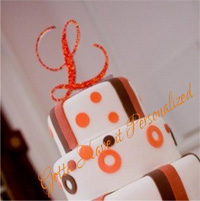World-famous European crystals are known for their quality, shine and versatility. At home, European crystals can be used in a variety of arts and crafts projects. Clothing, accessories, phones, shoes and bags are just a few examples of items that can be transformed with a small collection of European crystals and a little bit of powerful glue. Although working with crystals can seem intimidating at first, it can be a very simple and smooth process if you take the time to learn a few basic tips before you get started.
1. Choose the right crystals for your needs. European crystals are available in many different shapes, sizes and prices. If you are shopping online, pay close attention to the listed measurements. If there are no side-by-side pictures of the crystals and another object, get an idea of their size by comparing their measurements to the size of a coin. Because they have a relatively large surface area, bigger crystals are better for beginners. Smaller crystals require a little more skill and experience, but they have more uses than larger crystals. You also need to decide between flatback, sew-on and hot-fix crystals. Since projects that involve sew-on crystals are labor intensive, most people work with flatback and hot-fix crystals.
2. Get essential materials. While the exact list of items you need to buy depends on the type of project you want to work on, there are a few common supplies that anyone who wants to use European crystals should get. To make sure that you have everything you need for your first project, start with tweezers and industrial-strength adhesive. If you plan on working with hot-fix crystals, invest in a high-quality applicator wand. Hot-fix crystals come with an attached adhesive that needs to be melted with an applicator wand before the crystals can be glued on.
3. Practice first. If you are completely new to gluing crystals on fabric, do a test run on an old piece of clothing or any fabric that you do not plan to use in the future. To save money and avoid wasting your European crystals, you can try experimenting with cheaper alternatives until you are ready to move on to your main project.
4. Plan what you are going to design ahead of time. Since you need to use strong glue to prevent the crystals from falling off in the future, it is very important to have a plan for what you are going to design before you start gluing. If you are doing a font or a detailed design, use a thin washable marker or pen to outline it on top of the fabric. When you are ready, fill in your design outline by gluing crystals from the outside in. If you are working with flatback crystals, use tweezers to maintain complete control over where you glue each crystal. For beginners, it is best to avoid complicated designs that involve more than three different colors. If you do not have a lot of experience working with European crystals, stick to simple designs and one or two colors.
5. Clean up before you are officially done. If you spot noticeable glue stains on or around some of the crystals, use a small drop of acetone or rubbing alcohol to remove them. Remember that the goal is to get rid of the excess glue, so you want to try to only touch the areas where you see the glue to avoid dissolving the adhesive underneath the rest of the crystals. European crystals typically dry after 24 hours, but you should check the directions on your adhesive for detailed drying instructions.


